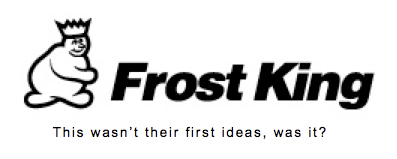Going with your first idea is rarely a good idea.*
One of the biggest mistakes most people make in creative pursuits is to go with the first good idea they come up with, or worst yet, they go with the first idea, period. This can be a particularly damaging habit when brainstorming. There are several reasons why this is usually not a good thing, not the least of which is the cold hard business reason: losing competitive advantage.
Years ago when I was an advertising creative director and used to look at dozens of advertising portfolios a month I could tell four pages into a book if that person was shooting from the hip or really thinking through a marketing problem and finding fresh solutions. When you do something for a living you can spot this type of lazy thinking a mile away — ideas that are tired cliches, not surprising nor differentiating concepts
Today as a creative thinking coach serving many industries I continue to see this rush to creativeness. There have always been three subsets of the population who tend to fall into this trap. But, more and more, I find this inclination across the board.
Rookie mistake.
The easiest group to peg with this tendency to stop at the first good idea is juniors. In spite of often being eager to create, this group simply hasn’t been around enough to know the obvious, been-done solutions from the truly breakthrough ideas. To this group I say use your boundless energy to look at lots of concepts in raw form then bring a short list (maybe 6 or 8 solutions) to your supervisor for final judgment. Of course, for your short list to be 6 or 8 solutions your long list needs to be dozens of possibilities. For an expansion of sheer quantity’s role in the creative process you’ll hear me write about “the law of large numbers” in this space a good deal of the time. Ironically, one of the reasons high achievers tend to have so many great ideas is that because they have so many bad ideas. Well, of course that comes with the territory of most all prolific thinkers.
Seniority is getting old.
Another group that too frequently falls into the go-with-the-first-idea pattern is very senior people. They’ve seen a lot of problems in their careers, they have a stockpile of pat solutions, so when a new problems looks familiar they simply plug in a “tried and true” idea. “Heck, it worked before, can’t it work again?” they say, “Besides, I’m busy.”
And therein lies the element that is too frequently turning the masses these days into lazy creative thinkers: the busy factor. People in business are simply so pressed, so jammed, they are willing to sacrifice quality thinking to get the work out. A short term mentality if I ever saw one. The real winners in business know that you can’t always solve new problems with old ideas. I mean if the old solution existed when the problem arose then that, by definition, means the old solution is not going to do the job. Busy people rationalize this, they go with their first good idea and it too often comes back to haunt them.
People visiting this site probably don’t need an explanation of why we need fresh ideas in business. But I will state that the success of thriving companies, brands and products most frequently comes from clear differentiation, and isn’t that alone an outcome of fresh thinking?
Too many brains.
In brainstorming my fellow creative thinking coaches and I often come across participants who miss the high-output potential of a group think session because they are attached to an early idea (or worst yet, an idea they brought into the room). For this reason and many others we always make quantity, not quality our main objective. And we delay judgement as long as wel can.
The solution?
As for advice on how to go beyond your first good idea, I could say just do it. But you knew that didn’t you? And that still hasn’t always been enough motivation to follow through when time is short and the pressure is on. One thing I will say is that a common denominator to most of the thinking methods used in Before & After’s creativity workshops involve generating lots of ideas in rough form in a short amount of time. Our 100MPH Thinking™ tool uses the law of large numbers to propel a thinker beyond the obvious. Our Intergalactic Thinking™ and our Ask a Better Question and As the Question Early tools immediately put people in a place where fresh ideas are more likely to arise.
And, again, since all of these processes are short cuts to fresh ideas, then we can’t use the “being too busy” excuse, since these methods are actually time savers and therefore workload diminishes.
Are these methods the only ways to avoid stopping at your first idea? I’m sure they’re not. But they are battle-tested practices used by great thinkers since the beginning to time, and are cornerstone concepts in a professional develop program my other creative thinking coaches and I have used with over a quarter of a million people, so they just might be worth a shot. That is, until you come up with a better idea. And, that, I surely encourage.
* This image above was my first idea for this article. Kinda shows, doesn’t it? Actually I was inspired to write this article after seeing this logo on one of this company’s weatherstripping products. Often when I see an idea that’s not well developed I simply chalk it up to another individual or company shooting from the hip creatively. This time it inspired an article. So I went with it for the article, not because I thought it was a great idea, but because I felt it was a good illustration for my purposes.
© Tom Monahan
Tom Monahan is founder of Before & After, a company that works with major marketers and ad agencies worldwide, including Target, Virgin, Novartis and Unilever, among others. Previously, Monahan was founder and Executive Creative Director at ad agency Leonard/Monahan, an incubator for creative talent in the 1980s and ’90s. Monahan has published The Do-It-Yourself Lobotomy under the Adweek imprint, was advertising columnist for Communication Arts for over a decade and was the youngest creative director written up in The Wall Street Journal’s long-running “Creative Leaders” series.



